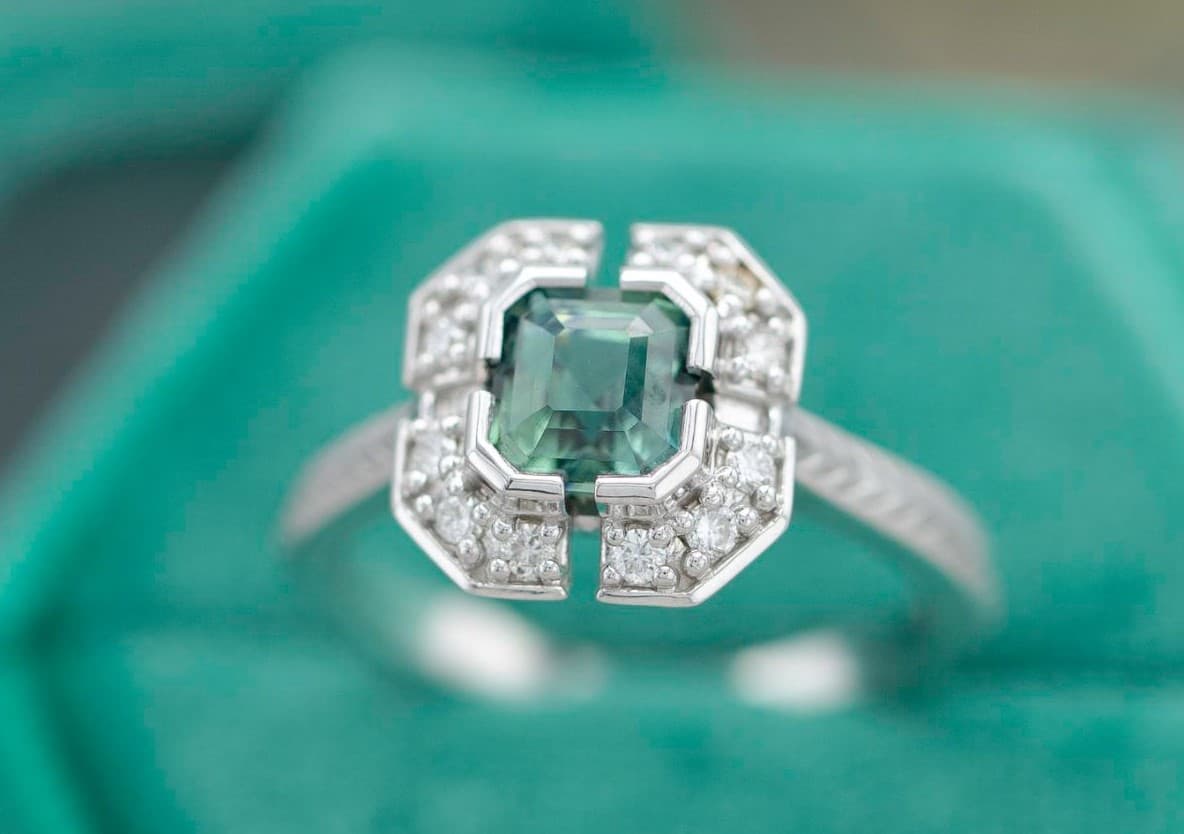The History of Princess Cut Diamonds
4 Minute Read
A Diamond Cut From Centuries Ago
So, you like princess cut diamonds, do you? Well, you're in great company. Some of the most style savvy collectors opt for diamonds cut into square shapes. The luxurious square diamond shape has some serious historical roots dating back to the 14th century. So, in a real sense, the square cut diamond has held jewelry fans spellbound for hundreds of years. Its popularity lies in its particular facet diagram (the cutting pattern) that helps the stone reflect light back to the eye. It also has clean straight lines that keep it looking fresh and on trend no matter how old or new it is.
First It Was A French Cut
Let's take a brief overview of the history of square diamonds so you can appreciate this cut even more. It is thought that the earliest cutters who created square diamonds did so because they wanted to optimize the rough diamond crystals that often came in an octahedron shape. While a diamond crystal may be recovered in many configurations, it has a crystal habit of the octahedron shape—meaning it is often discovered this way. In very early times, prior to modern scientific methods of gemstone separation, dealers relied heavily on the crystal habits of gemstones as an important way to aid in gemstone identity.
Think of the octahedron as two pyramids connected at their flat bottom surface. The pyramid shapes would have helped early diamantaires to shape the diamond in the way they wanted. When they cut square shapes from the octahedron, there was much less diamond cut away, so the resulting stone yielded a much larger carat weight. That's a good thing. For centuries this primitive square cut was favored, and by the early 20th century it became referred to as the French Cut diamond. The hallmark of a good French Cut diamond is that it retains much of its original rough shape while still producing stones with spectacular light return -which is a jazzy way to express their 'sparkle'. It was such a brilliant way to cut and polish diamonds, that cutters used this same pattern to fashion sapphires, rubies and emeralds which were the top colored stones during that era. When you think of the Art Deco period, which evolved during the 1920s, you may recall seeing many fashionable high-jewelry stones cut into square shapes—diamonds and colored gemstones alike. This is because the Art Deco era paid homage to the glorious age of Industry and the architectural advancements made during that time period. So, there was a geometrical aspect to fine diamond and gemstone jewelry.
at CustomMade
It is important to note what a great shape this is for the gents, too. The geometrical design of square diamonds lends themselves to a sophisticated men's wedding band. Take a look here for some inspiration:
at With Clarity
Innovation Created The Princess Cut
Like every other industry, the diamond trade has been a business marked by innovation and evolution. As cutting processes became more complex and knowledge of light performance in a diamond became more understood, every diamond shape underwent transformation, decade after decade. The square cut diamond also evolved into what was known as the square modified brilliant cut within the trade. We see that this definition of a square diamond shape first appeared during the early 1960s. The cutting pattern was different from its earlier incarnation as the French Cut. Cutters were becoming savvier to the relationship of the facet placement and the angles of one facet to another on a diamond. All this aided in producing diamonds that were more brilliant than their earlier counterparts. There are some discussions as to when the term Princess Cut diamonds began to be used. Some diamond historians think it also started in the 1960s. But definitely by the 1980s, diamond lovers enthusiastically embraced the Princess Cut diamond.
at Blue Nile
The popularity of square cut diamonds has never waned. The reason for the wild enthusiasm with the Princess shape diamond has to do with its ultra-feminine look. It also evokes a fresh modern vibe that today's brides prefer. Many jewelry collectors love the Princess or square cut diamond so much that nothing less than a timeless diamond solitaire will do to best show it off.
at Zales
Diana Jarrett GG RMV
Creative writer, author and Gemologist, Diana Jarrett is a graduate gemologist (GG GIA) and Registered Master Valuer.
Related Articles
Can an I1 Clarity Diamond be Eye-Clean?
Is an I Clarity Diamond a Good Buy?
Buying Guide: How to Select, Wear, and Buy Cufflinks
Lab-Grown Diamonds FAQ
Never Stop Learning
When you join the IGS community, you get trusted diamond & gemstone information when you need it.
Get Gemology Insights
Get started with the International Gem Society’s free guide to gemstone identification. Join our weekly newsletter & get a free copy of the Gem ID Checklist!
